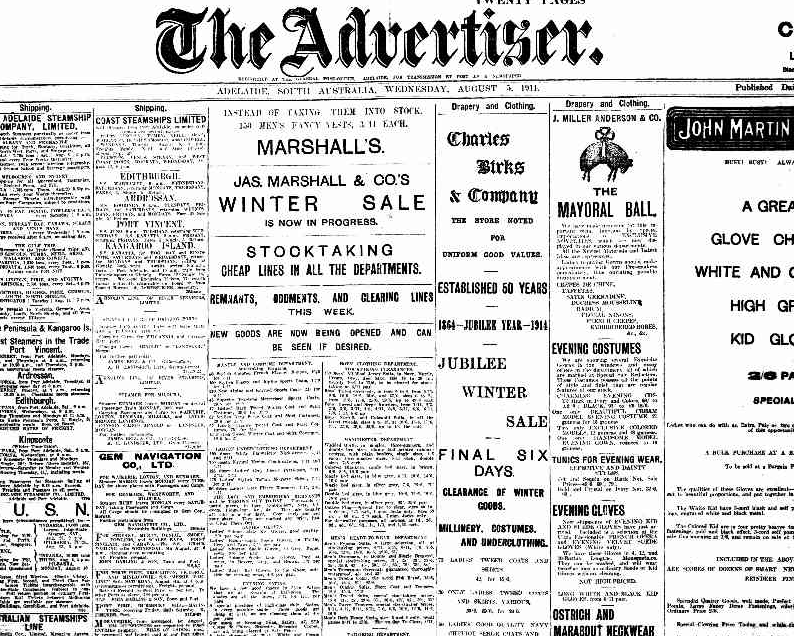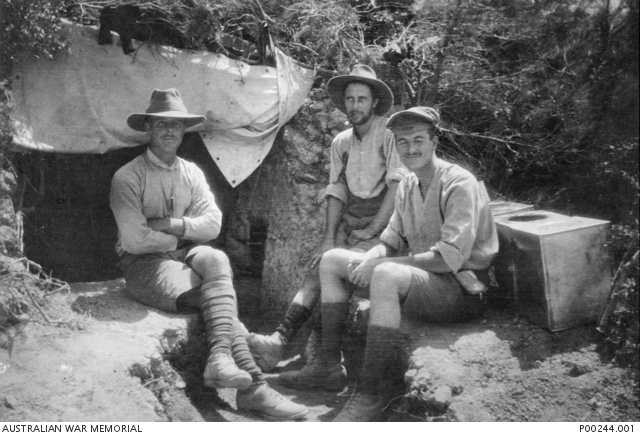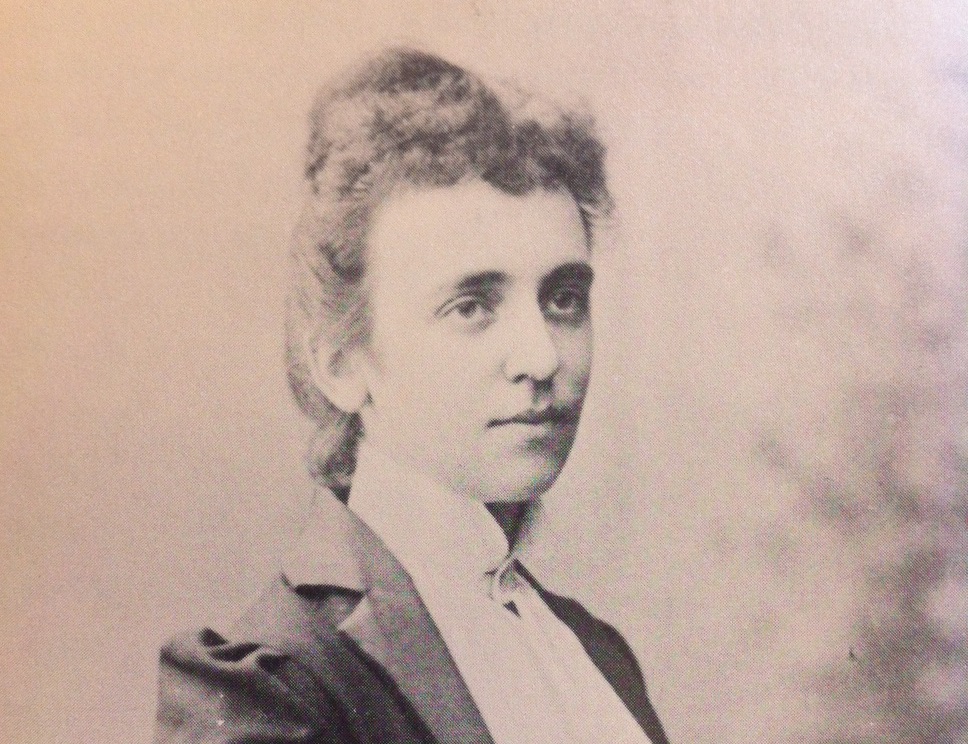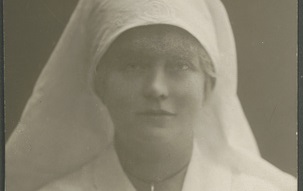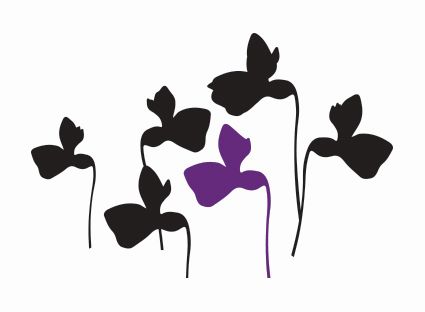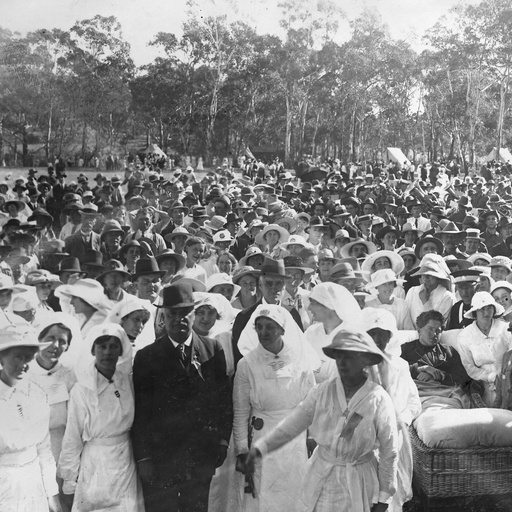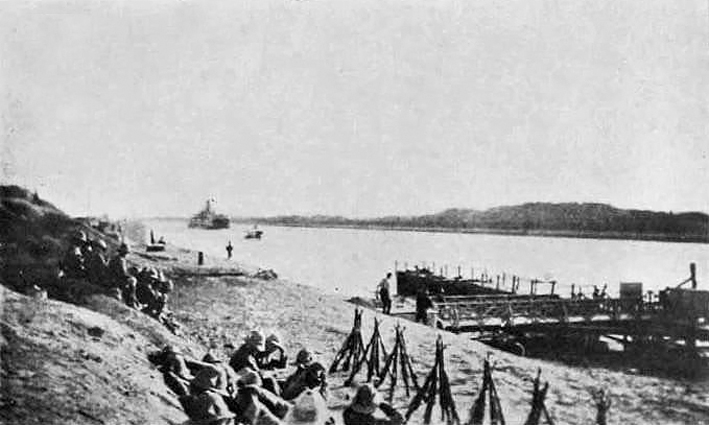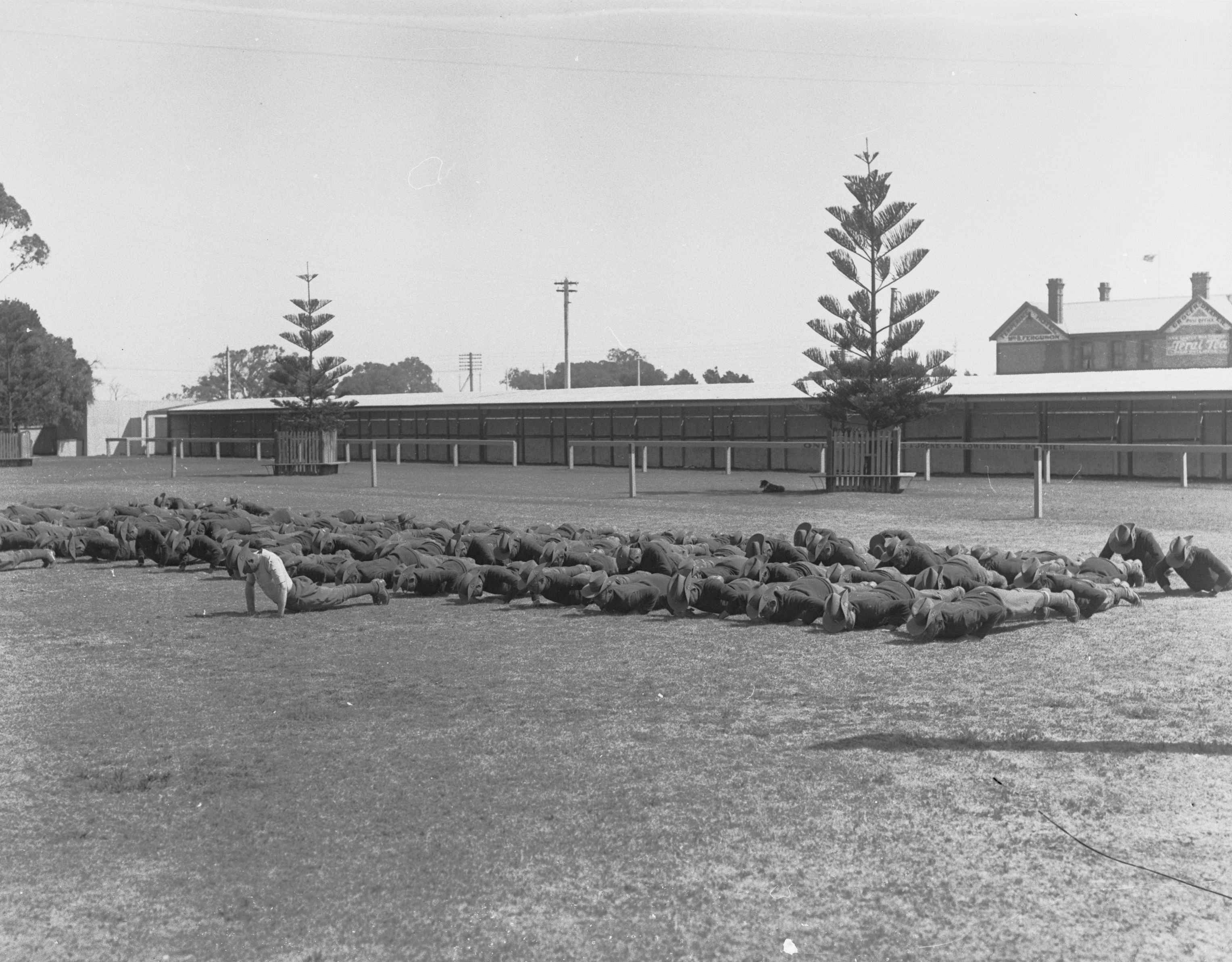

Soldiers drilling at Morphettville Camp. History SA. South Australian Government Photographic Collection, GN01388
Glossary Terms
Topics
People
Terrell, Frederick Leopold, Fisher, Andrew, Lady Galway, Avery, Louis Willyama, Seager, Alexandrine, Governor Galway
Places
Organisations
February, 1915
Although it began with the Foundation Day holiday, for many in South Australia, February 1915 was probably a fairly unremarkable month. The papers were still filled with detailed news from faraway battlefields and at home the heat, drought and bushfires continued. The combination of war and drought pushed bread prices higher and with limited feed available for stock, chaff was imported from Tasmania. But for all the difficulties here, Ethel Cooper’s letters reveal a dire situation in Germany, where the government placed severe restrictions on flour consumption. Things had become more difficult for her too, distrusted by her neighbours, who made false reports about her activities to police. Her letters also make us think about what life must have been like for Germans living in South Australia.
LIFE IN CAMP – MORPHETTVILLE AND EGYPT
For one of our correspondents though, February was a memorable month: it was Leo Terrell’s entry into the Army and coincided with the announcement that Australia had offered a third contingent of around 10,000 men. His diary tells us much of the daily routine for new recruits at Morphettville – early mornings, physical drills, inoculations, illness, entertainments and ‘a little excitement as one of the fellows got out of hand’. It was incidents like this one that prompted Alexandrine Seager to pen a poem in defence of such high spirits. Terrell writes too, of time off from camp duties to see family and his beloved Clara.
Although less detailed, Louis Avery’s diary tells us that in Egypt, the troops were also still training hard, with the action a great deal closer. He mentions an attack by Ottoman troops on the Suez Canal in the first days of February. An Indian force met and beat back the advancing army and was subsequently reinforced by Australian infantry.
SPOTLIGHT ON SA
The Governor of South Australia managed to cause a stir, questioning the White Australia Policy when opening the Uraidla Show: ‘By all means, have a White Australia if under that principle you can fully develop the country…Looking at the splendid services being rendered to our Empire by our Indian troops and by our Japanese allies, I am one of those who think that the feelings of Australians on the colour question will undergo considerable change …when the war is over.’ The Prime Minister, Andrew Fisher, took issue with the comments, which the Governor later withdrew. Less controversially, he also made a speech praising the people of South Australia for their marvellous fundraising efforts for the Belgium Relief Fund and the Red Cross, with Lady Galway reporting to have received a letter from the Belgian Queen Elisabeth thanking the people of South Australia for their support.
AROUND SA
It is interesting to note that 100 years ago electricity was still being rolled out around the City, and in February the Adelaide Railway Station was electrified. In other news, a food poisoning outbreak in Petersburg (which would become Peterborough later in the war, when German place names were changed) left one 13-year old dead and around 100 ill. It was linked to tainted ice-cream. There was also excitement at the announcement of a new children’s library opening at the State Library of South Australia – the first in Australia. February also saw the annual ‘Swim through Adelaide’ event – from the weir to behind Jubilee Oval (now the site of Adelaide University). There was only one woman in the field – Alice Kellett. Lastly, there is no doubt South Australians were proud of the efforts of the Laura Boy Scouts, who were presented with a silk banner by King George V for being the best scout troop in Australia.


